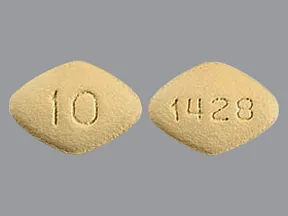Farxiga is the brand name for the medication dapagliflozin. It is an oral medication used to treat type 2 diabetes by helping to lower blood sugar levels. Here’s information about its uses, benefits, common symptoms, and potential side effects: Farxiga Tablet Uses Benefits and Symptoms Side Effects

Uses and Benefits of Farxiga:
- Type 2 Diabetes: Farxiga is primarily used to treat type 2 diabetes mellitus, a condition characterized by high blood sugar levels resulting from insulin resistance or insufficient insulin production by the body. It works by reducing the reabsorption of glucose in the kidneys, leading to increased urinary glucose excretion and lower blood sugar levels.
Common Symptoms and Side Effects of Farxiga:
- Genital Yeast Infections: Farxiga can increase the risk of genital yeast infections in both men and women. Symptoms may include itching, redness, soreness, or discharge. Maintaining good personal hygiene and seeking appropriate treatment can help manage this side effect.
- Urinary Tract Infections: Farxiga may increase the risk of urinary tract infections. Symptoms may include pain or a burning sensation during urination, frequent urination, or lower abdominal pain. It’s important to seek medical attention if you experience symptoms of a urinary tract infection.
- Increased Urination: Due to its mechanism of action, Farxiga can lead to increased urine production and more frequent urination.
- Dehydration: Farxiga can increase the risk of dehydration, especially in older adults or individuals with kidney problems. It’s important to drink an adequate amount of fluids while taking Farxiga and seek medical attention if you experience signs of dehydration, such as excessive thirst, dry mouth, dizziness, or decreased urination.
- Hypoglycemia: While Farxiga is not associated with hypoglycemia (low blood sugar) as a standalone medication, it can increase the risk of hypoglycemia when used in combination with other diabetes medications that can cause low blood sugar.
It’s important to take
Farxiga as prescribed by your healthcare professional and follow their instructions regarding the dosage and frequency of administration. Inform your healthcare provider about any pre-existing medical conditions, medications, or supplements you are taking, as they can interact with Farxiga.
If you have any concerns or experience
troubling side effects while taking Farxiga, consult with your healthcare provider for further evaluation and guidance. They can provide personalized advice based on your specific medical history and condition.
Farxiga Tablet Uses Benefits and Symptoms Side Effects Farxiga Tablet in hindi Farxiga Tablet in hindi






